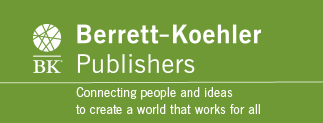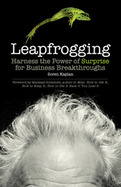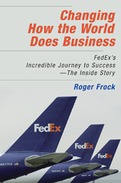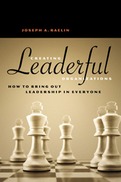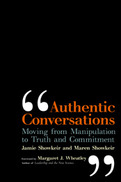Search Results: ""
Results 193-198 of 1358
Leapfrogging
2012
In his trailblazing debut, Kaplan gives business leaders the tools to do exactly what they're taught to avoid: embrace surprise-the new key to business innovation.
How did Gatorade revitalize itself in the wake of Red Bull and Starbucks? How did OpenTable come to be? What makes one company thrive while others languish in mediocrity? There’s no doubt hard work is involved, but Soren Kaplan shows you can’t do it by simply creating a big vision and implementing a set plan. In his trailblazing debut, Kaplan gives business leaders the tools to do exactly what they’re taught to avoid: embrace surprise—the new key to business breakthroughs. Instead of fighting against uncertainty, Kaplan reveals how to use it to break down limiting mindsets and barriers to change the game. By highlighting specific ways to transform both good and bad surprises into unique opportunities, Kaplan encourages leaders to compete by embracing counterintuitive ideas, managing paradoxes, and even welcoming failure. This is the key to “leapfrogging”—creating or doing something radically new or different that produces a significant leap forward. Leapfrogging connects new research, unconventional strategies, and practical tools for navigating the “messy” and elusive process of achieving business breakthroughs. Filled with real-world examples from innovators such as Gatorade, Intuit, Philips, Kimberly-Clark, Colgate-Palmolive, OpenTable, and Etsy, Kaplan shows that any organization or business function can leapfrog. Using his LEAPS process (Listen, Explore, Act, Persist, and Seize), leaders learn to seek out, recognize, and respond to surprising experiences and events as a way to create solutions that leap beyond the current expectations of customers, partners, employees, the market, and the competition. Kaplan’s Leapfrogging is the new handbook for the modern leader.
Appreciative Intelligence provides a new answer to what enables successful people to dream up their extraordinary and innovative ideas; why employees, partners, colleagues, investors, and other stakeholders join them on the path to their goals, and how they achieve these goals despite obstacles and challenges. It is not simple optimism. People with appreciative intelligence are realistic and action oriented--they have the ability not just to identify positive potential, but to devise a course of action to take advantage of it.
Drawing on their own original research and recent discoveries in psychology and cognitive neuroscience, Thatchenkery and Metzker outline the evidence for appreciative intelligence, detail its specific characteristics, and show how you can develop this skill and use it in your own life and work. They show how the most successful leaders are able to spread appreciative intelligence throughout an organization, and they offer tools and exercises you can use to increase your own level of appreciative intelligence and so become more creative, resilient, successful, and personally fulfilled.Appreciative Intelligence provides a new answer to what enables successful people to dream up their extraordinary and innovative ideas; why employees, partners, colleagues, investors, and other stakeholders join them on the path to their goals, and how they achieve these goals despite obstacles and challenges. It is not simple optimism. People with appreciative intelligence are realistic and action oriented--they have the ability not just to identify positive potential, but to devise a course of action to take advantage of it.
Drawing on their own original research and recent discoveries in psychology and cognitive neuroscience, Thatchenkery and Metzker outline the evidence for appreciative intelligence, detail its specific characteristics, and show how you can develop this skill and use it in your own life and work. They show how the most successful leaders are able to spread appreciative intelligence throughout an organization, and they offer tools and exercises you can use to increase your own level of appreciative intelligence and so become more creative, resilient, successful, and personally fulfilled.
- Draws on the authors' original research and the latest discoveries in psychology and cognitive neuroscience to identify a previously unknown intelligence shared by successful leaders: appreciative intelligence
- Uses real-world examples to show appreciative intelligence in action
- Includes tools and exercises for developing appreciative intelligence in yourself and your organization
The Circle Way
2010
An authoritative and accessible guide to this foundational form of collaborative decision-making
Uses images, stories and step-by-step instructions to teach the basics of circle and explore it’s deeper meanings
Written by two pioneers in reviving, standardizing and popularizing circle process
More and more organizations are looking for alternatives to rigid, top-down hierarchy. Even the most old-school now realize that good ideas can come from anywhere and that fostering collaboration and group cohesion is vital to any healthy enterprise. But what approach can best create an environment that ensures clear speaking, compassionate listening, and the making of well-grounded decisions? The most ancient one: the circle.
The circle was the form of original gathering that taught human beings how to create social patterns. All modern group processes open to collaboration or to flattening the hierarchy are based in some way on circle practices. Here two veteran practitioners offer a comprehensive guide to this foundational form of human interaction
The Circle Way lays out the basics of circle conversation based on the original work of the coauthors, who have studied and standardized the essential elements of circle practice and have been implementing them in a variety of organizations for over fifteen years. It opens with a unique visual guide to circle and then presents both structure and story so that readers understand how these elements come into play and how they are interrelated and interactive. Baldwin and Linnea include detailed instructions and suggestions for getting started, setting goals, and solving conflicts. And they delve into the deeper aspects of circle, illuminating the profound transformation the process has on people who participate in it.
From one of the founding executives of FedEx comes the first full inside story of how Fed Ex came to be one of the world’s most successful, innovative, and admired companies. Frock reveals the details of how the company was conceived, launched, and kept afloat despite incredible obstacles.From humble beginnings, FedEx has literally revolutionized the way business is conducted. Not too long ago, overnight shipping was barely an option for even the largest companies. Today, thanks to FedEx, it's available to every living room start-up. With annual revenues of $30 billion, more than 250,000 employees, 600 aircraft, and 70,000 surface vehicles, FedEx handles nearly six million shipments a day in two hundred countries. FedEx has become a household name, and has been named one of the top ten of America's Most Admired Companies by Fortune magazine.
But it wasn't always easy. From his inside vantage point as the company's first general manager and chief operating officer, Roger Frock reveals the remarkable details of how Fred Smith and his team endured their tumultuous early years--fraught with a seemingly unending series of legal, financial, and operational crises that continually threatened the company's ability to stay in business--and, in the end, created an entirely new industry.
Frock chronicles the dramatic last-minute saves and turnarounds the company engineered from its inception to the present. He entertains with stories of the trials and tribulations of the company's early struggles and victories--from Pilots using personal credit cards to fuel planes, to the courier who hocked his watch to put gas in his delivery van, and, one of the most memorable episodes, the time that founder Fred Smith literally gambled the company's last remaining funds to keep the planes flying.
Frock's story introduces all the players--FedEx's resourceful and resilient leaders and employees--and shows how these remarkable individuals gave Fred Smith's original concept wings and, through flexibility, creativity, and commitment, made a fledgling startup into one of the great success stories in modern business. Changing How the World Does Business is an inspirational tale for leaders and entrepreneurs everywhere.
- The first complete insider account of the founding and early years of FedEx, one of the most important companies in the history of modern business
- By the company's first general manager and chief operating officer
- Features surprising, never-before-told stories about how FedEx overcame extraordinary obstacles on the road to success
The times demand a new style of leadership. Employees today are highly trained and independent-they can offer much more to an enterprise than simply their obedience. And with the relationship between worker and organization constantly changing, no one person will likely be able to lead alone. Creating Leaderful Organizations presents a paradigm of leadership tailored to our times, one that is based on mutual-rather than heroic-leadership.
It is not merely consultative, with leaders graciously allowing followers to participate in leadership, nor is it a stewardship approach in which the leader occasionally steps aside to allow others to take over temporarily. It is a revolutionary new approach that transforms leadership from an individual property to a collective responsibility. Raelin details how "leaderful" practice can accomplish the critical processes of leadership more effectively than any existing approach. And using actual examples from leading-edge organizations, he offers practical guidance for assessing your own and others' leaderful predisposition, preparing for leaderful practice, distributing leadership roles, and dealing with resistance to change.
- Outlines a revolutionary new approach to leadership that is better able to respond to organizational turbulence, meet customer expectations, maintain employee commitment, and unleash creativity
- Shows why leadership must be concurrent-with two or more people leading simultaneously-if organizations are to flourish
- Includes examples of this new approach in action from some of today's most progressive organizations -- the Peace Corps, Orpheus Chamber Orchestra, Virgin, Harley-Davidson, and The New Yorker.
In this groundbreaking new book, the Showkeirs take something people typically think of as merely functional—ordinary conversations—and show the power they have to create, sustain, and change the very nature of workplace culture. Conversations can lead to an engaged and energized workforce, or to one that is alienated and uninspired. If you want to change the culture you must change the conversations.
All too often workplace conversations—between managers and direct reports, peer-to-peer, or with external stakeholders— create parent-child relationships. People hide facts, sugarcoat reality and claim helplessness to try to control interactions and get what they want. The Showkeirs expose the destructiveness of these manipulative conversations, and demonstrate how we can move to honest and authentic interactions that create adult relationships. By intentionally and thoughtfully changing conversations, organizations will engender increased commitment, true accountability, and improved workplace performance.
Drawing on more than 25 years of experience as organizational consultants, their book offers examples of parent-child and adult-adult workplace conversations in a variety of settings, circumstances and industries. They also provide a hands-on guide, including sample scripts, for dealing with a host of potentially difficult conversations.
Authentic Conversations goes to the heart of why so many people today are disengaged, uninspired, and uncommitted to their organization’s success. It challenges the conventional wisdom about managing people and sets out specific, concrete ways to consciously make conversations the primary driver for change.
